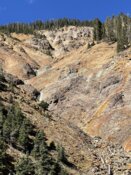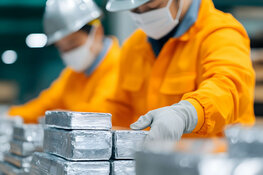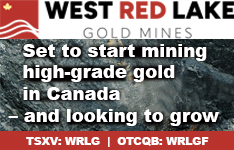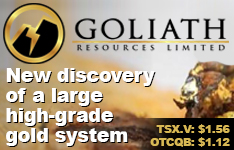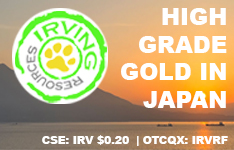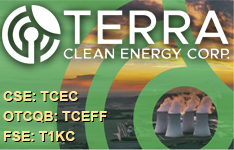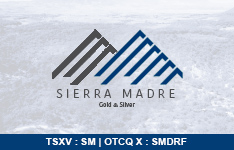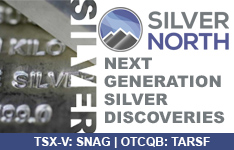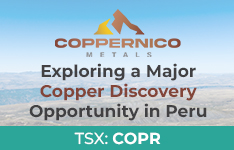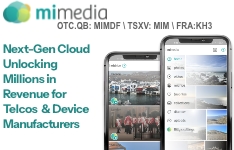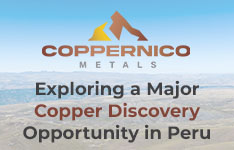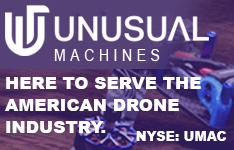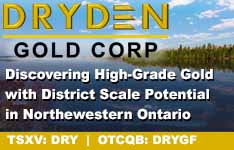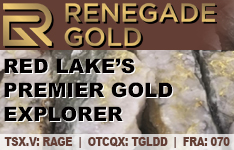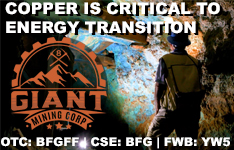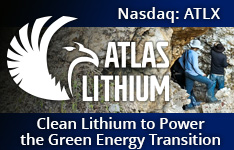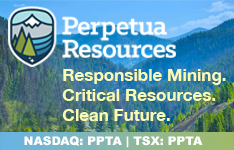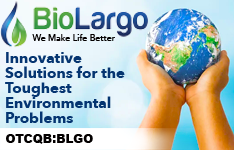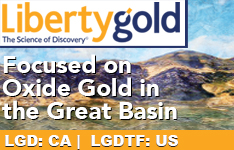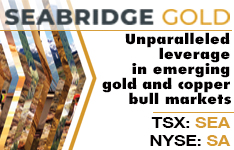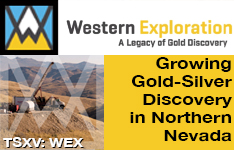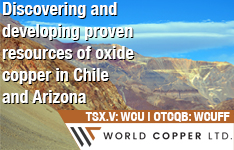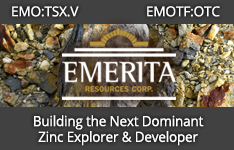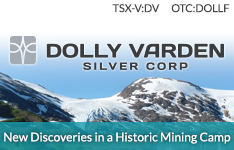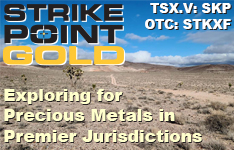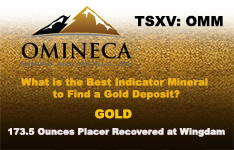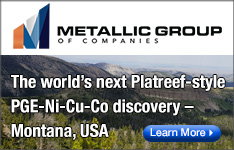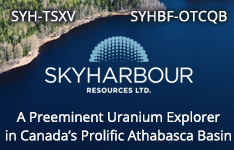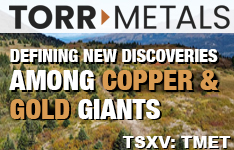Greenland Resources Inc. (MOLY:CBOE; GRLRF:OTC) received a 30-year exploitation permit for molybdenum and magnesium at its 100%-owned Malmbjerg project in east-central Greenland, according to a news release. The license may be extended for up to 50 years.
"[The license] is a sign of confidence in our mining industry in general, but also in Greenland Resources and their project," said Naaja H. Nathanielsen, minister for business, mineral resources, energy, justice, and gender equality for Naalakkersuisut, or Greenland's government.
The company will continue working on fulfilling the remaining license-related requirements, the release noted. Mining must start by Dec. 31, 2028 at the latest, unless otherwise approved.
Developing a Molybdenum Mine
Headquartered in Ontario, Canada, Greenland Resources is a junior miner recognized by Greenland's government in 2023 as Prospector and Developer of the Year. Malmbjerg boasts a molybdenum (Mo) with copper (Cu) deposit, featuring ore containing a high concentration of molybdenum sulphide (MoS2) and low levels of impurities, similar to Climax, in Colorado, the largest known molybdenum deposit.
Malmbjerg has Proven and Probable reserves of 245,000,000 tons of 0.176% of molybdenum disulfide (MoS2), for 571,000,000 pounds (571 Mlb) of contained molybdenum metal. Given that both minerals are considered critical in the European Union (EU) and given the objectives of the ReArm Europe Plan/Readiness 2030, Malmbjerg is considered a strategic EU project. Readiness 2030 aims to significantly increase defense spending to €800 billion (€800B) by 2030 via several means, strengthen Europe's defense industry, and enhance military equipment.
As such, Greenland Resources' molybdenum project is supported by EIT RawMaterials GmbH, a networking organization dedicated to fostering Europe's transition to a green, circular, and digital economy and managing the European Raw Materials Alliance initiative.
A 2022 definitive feasibility study (DFS) outlines Malmbjerg as an open-pit molybdenum mining operation producing magnesium as a byproduct. The mine boasts an environment-friendly design intended to reduce water use, to lessen disturbing aquatics and to minimize its footprint by using modularized infrastructure. It uses less carbon dioxide than other primary molybdenum mines.
The projected economics of Malmbjerg, using a molybdenum price of US$18 per pound, include a 33.8% internal rate of return and a 2.4-year payback. Capex is US$820 million (US$820M). EBITDA is greater than US$350M per year for 20 years.
For the first half of the mine life, high-grade molybdenum would be mined. The average annual production for years one to 10 is 32.8 Mlb per year of contained molybdenum metal at an average grade of 0.23% MoS2. This would cover about one-quarter of the EU's total annual molybdenum consumption and all of the EU's molybdenum needs for defense.
In its molybdenum mining operation, Malmbjerg will use about 35,000 cubic meters of saline water, containing about 990 parts per million of magnesium. As such, Greenland Resources is investigating innovative technologies for extracting the magnesium from the saltwater. Magnesium is present in the company's molybdenum concentrate, too. The junior miner would like to incorporate magnesium recovery into the DFS' economics.
Greenland Resources' strategy entails servicing mainly the EU market. Already, the company has offtake agreements in place with EU end users, including the largest EU chemical and metallurgical steel companies. One, for instance, is a US$1.6B, 10-year, take-or-pay agreement with Outokumpu, Finland's largest stainless steel producer. Greenland Resources has letters of intent regarding capex from AAA and AA credit-rated banks and agreements with EU equipment suppliers, roasters and EU/Canadian construction companies.
Malmbjerg should have a substantial economic impact, according to the release. The project could generate almost US$1B in taxes during the 20-year life of mine, could create critical infrastructure on the East Coast and could afford locals new skills.
"Our team has a good track record from previous mining projects on sustainable mining and providing wealth and prosperity to communities," Greenland Resources Chief Executive Officer and President Dr. Ruben Shiffman said in the release.
The mining developer had applied for the just-received exploitation license in Q1/24.
Molybdenum Mine Needed
The EU is the world's second-largest molybdenum user behind China, consuming about 122 Mlb of the metal per year, 19% of global demand, according to a February International Molybdenum Association report. The EU has a large processing capacity with two major molybdenum roasters, one in Ghent and another in Rotterdam, but no molybdenum production. The EU relies on imports of the metal, primarily from China, the world's dominant producer. Overseas miners supply the EU with molybdenum concentrate.
A significant market of end users of molybdenum already exists in the EU, given it is a significant manufacturer of a diverse array of specialty steel products. Steel and cast iron require molybdenum for enhanced strength, hardenability, weldability, toughness, temperature strength and corrosion resistance. About 80% of the molybdenum used in the EU is for its steel products. The steel-dependent industries, such as automotive, construction, and engineering, account for about 18% of the EU's gross domestic product. As such, a local molybdenum mine is needed, Greenland Resources notes in a recent presentation.
Steel is one of the three industries that will drive growth of the EU molybdenum market, according to a February Research and Markets report. The second industry is defense. More than 80% of the metallic minerals used in defense applications require molybdenum alloying. The third industry is green technologies, including low-carbon power generation, all of which use molybdenum.
The EU molybdenum market is expected to start an upward consumption trend over the next decade, according to a June IndexBox blog post, due to rising demand for the metal's ore. Increases are expected in market volume at a 1.2% compound annual growth rate (CAGR) and in value, at a 2.8% CAGR, between 2024 and 2035. By the end of 2035, the market volume is projected to hit 46,000 tons; the market value is expected to reach US$1.1B in nominal prices.
As for the global molybdenum market, it is forecasted to expand at a 3.92% CAGR between 2025 and 2030, reaching US$6.7B from US$5.32B, a 2025 MarkNtel Advisors study indicated. Production around the world is projected to increase in volume to 627.4 Mlb from 575.4 Mlb.
The Catalyst
Soon, Greenland Resources expects to provide positive news regarding the debt and equity portion of the capex financing package for Malmbjerg, including strategic investors, according to the news release.
'Geopolitical Gold Mine'
Financial Journalist Wesley Park wrote for AInvest on June 19 that Greenland Resources is "a story of geopolitical leverage, robust economics and a once-in-a-generation opportunity to profit from raw material shortages." He highlighted Malmbjerg's resource, mine plan and magnesium bonus as well as the company's solid partnerships.
Park described the project as a "geopolitical gold mine." This is because the EU's Critical Raw Materials Act mandates reducing reliance on non-EU suppliers, and Greenland Resources and its Malmbjerg project make for an ideal EU supplier. The project is within the EU's sphere of influence, avoids China's supply chain dominance and aligns with the ERMA's goals.
The bottom line, wrote Park, is that Greenland Resources offers massive upside and is a Buy. "
 Streetwise Ownership Overview*
Streetwise Ownership Overview*
Greenland Resources Inc. (MOLY:CBOE;GRLRF:OTC)
This Arctic gold mine is a geopolitical win — and a gold mine for investors bold enough to act," he added.
Ownership and Share Structure
According to Refinitiv, insiders own 26.06% of Greenland Resources. The shareholder with the greatest stake is Executive Chairman Dr. Ruben Schiffman with 20.57%. Other insiders are Director Leonard Asper, Director of Geology & Mining James Steel and Director of Social & Government Nauja Bianco.
The one institutional investor is Fondsmæglerselskabet Maj Invest A/S, with 2.71%. The rest is in retail.
Greenland Resources has 117.16 million (117.16M) outstanding shares and 86.63M free float traded shares. Its market cap is CA$115.96M. Its 52-week range is CA$0.475–1.60 per share.
| Want to be the first to know about interesting Critical Metals investment ideas? Sign up to receive the FREE Streetwise Reports' newsletter. | Subscribe |
Important Disclosures:
- Doresa Banning wrote this article for Streetwise Reports LLC and provides services to Streetwise Reports as an independent contractor.
- This article does not constitute investment advice and is not a solicitation for any investment. Streetwise Reports does not render general or specific investment advice and the information on Streetwise Reports should not be considered a recommendation to buy or sell any security. Each reader is encouraged to consult with his or her personal financial adviser and perform their own comprehensive investment research. By opening this page, each reader accepts and agrees to Streetwise Reports' terms of use and full legal disclaimer. Streetwise Reports does not endorse or recommend the business, products, services or securities of any company.
For additional disclosures, please click here.



